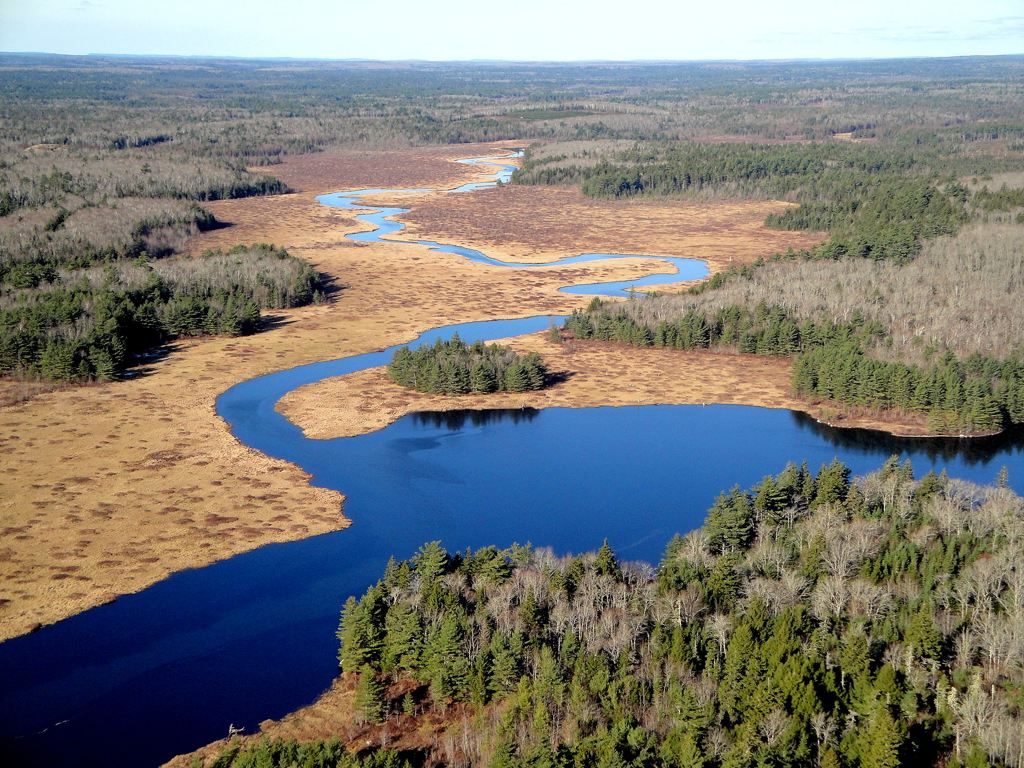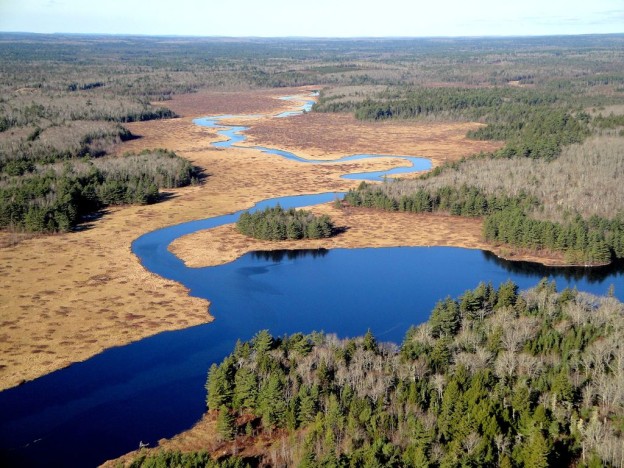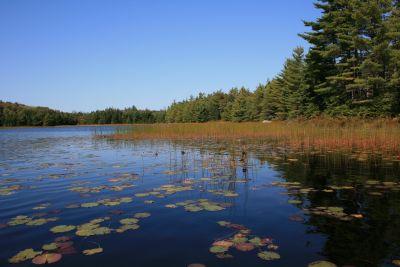It looks like another one of our new-but-not-yet-officially-designated protected Wilderness Areas is under attack and needs your help right now.
The DOE would like to protect about 20% of the former Bowater lands down in the Medway River watershed.I have been told that this is a fantastic area for wildlife and all NS flora and fauna.
The issue is that the ATV groups in that area want 100% access to the area, and at a recent meeting with the DOE and the public, no one voted to protect it. This is a sad situation as the provincial government may change their mind on protection.
I was asked by Raymond Plourde to send out some info and ask our members to respond to the government’s website to show them that we do still want the 12% protected.The comments can be sent to medwaycomments@novascotia.ca.
The time to do this is now, time is of the essence.
Below is a condensed
version of a memo from our friends at the Ecology Action Centre for more information:
On Sunday, September 20th, Matt Miller and Ray Plourde from Ecology Action Centre’s Wilderness Committee, attended a public meeting in Caledonia held by the “Society of Nova Scotians for a Sustainable Rural Economy”. Despite the rather broadly based economic theme presented as the stated intent of their Society, the meeting was entirely dedicated to the issue of motorized vehicle access (truck, car, ATV, snowmobile) to the pending Medway Lakes Wilderness Area (MLWA). The majority in the room (about 100) were there to support expanded or total vehicle access into MLWA.
The meeting was structured to allow presentations from a variety of perspectives. Amanda Lavers from Mersey Tobeatic Research Institute spoke about the role of protected areas in biodiversity conservation and impacts of roads and vehicle use on wildlife, notably trout populations. EAC’s presentation gave some background on protected areas, both globally and provincially, the need for large roadless areas, etc. and an offer was made to work collaboratively to address trail connectivity issues for the area. The meeting ended with a “vote” on three options that ranged from killing the MLWA, to allowing full use of all the roads within MLWA and finally to go ahead with the government’s proposed access plan (see below). We were disappointed that the meeting was structured to include a vote on just these three options, as it precluded an opportunity to work together to find some common ground. We did not participate in the voting. The new society’s organizers have also been making the rounds to all the municipal councils in southwest Nova Scotia, doing rather one-sided presentations and asking for support for total motorized access to the former Bowater lands.
Someone has also launched a petition for motorized access on Change.org (see: https://www.change.org/p/government-of-nova-scotia-keep-the-former-bowater-lands-open-for-public-access).
The wording of this petition is deliberately misleading, stating that wilderness areas will “completely shut down access”, with people “not being allowed the freedom to explore these forests and lakes”. Nothing could be further from the truth. It’s important to note that public access to all wilderness areas in NS is guaranteed under the law. It is the use of motorized vehicles that is very limited. People are still allowed to hike, camp, canoe, fish and hunt in these areas and the MLWA actually has many access points by road and canoe launches. Both the meeting and the petition are squarely aimed at allowing seemingly unfettered motorized access within all the former Bowater lands, including those designated for protection.
It is important to note that the Medway Lakes Wilderness Area is only about 20% of the former Bowater Medway District lands and that roughly 90% of the roads in the District would still be open to vehicle use. 80% of the District and 90% of the roads for motorized use seems more than fair. This amounts to over 1,000 kms of the roughly 1,200 kms of woods roads in the Medway District, in addition to hundreds of additional kilometres of “informal” ATV trails. Wildlife needs spaces to survive and people who enjoy non-motorized wilderness recreation need places to go. This seems fair.
It is also important to note that any claims of “traditional” or ‘long-standing” access by Off Highway Vehicles are wrong. The Bowater lands were privately owned, gated and strictly controlled. ATV’s in particular were expressly banned although there was plenty of illegal use, the point being that access to ANY of these lands is a new privilege not a long-standing right.
Meanwhile on Friday, September 18th, Nova Scotia Environment (NSE) announced some minor boundary changes and major new road exclusion changes for the MLWA (see http://www.novascotia.ca/parksandprotectedareas/plan/progress/mlwa/).
As you can see from the map provided, the significant new road exclusions dissect the wilderness area through it’s core, with several additional spur roads going out in different directions. MLWA is one of the largest and most significant additions to the protected areas network announced when the final plan was approved by government. At first glance this move appears to be a capitulation to the ATV lobby for more access but as the Newsletter indicates it appears that the primary reason is to convenience timber harvesting and trucking operations at various points on the north side of the MLWA.
We have several concerns regarding Friday’s announcement by government, including:
1) Process: The Parks and Protected Areas Plan was the result of numerous rounds of public consultation culminating in the release of the final plan in 2013 to much fanfare and endorsement from all three political parties. While the plan already included too many and trail exclusions from EAC’s perspective, we supported the final product because it was the result of such a broad-based consultation. No one group got everything they wanted but the outcome seemed fair and balanced. This is a major after-the-fact change that will significantly impact the ecological integrity of the Medway Lakes Wilderness Area.
2) Impacts on ecological values and wilderness recreation: Obviously these proposed road exclusions, which are much more generous (and egregious) than those in the final plan, will impact the MLWA. According to NSE’s profile of MLWA, the area was identified for protection for the purpose of protecting a large, road less core wilderness area and for promoting wilderness recreation. Both values will be heavily impacted by the proposed changes to the road network. The government’s own joint NSE/DNR Biodiversity Science Advisory Committee identified the area as a “key remaining stronghold for the much diminished Brook Trout, which can be maintained if the lakes and rivers of this area are extensively buffered from industrial activity and off-limits to motorized recreational access.”
It is unclear what Friday’s announcement really means. The newsletter from NSE refers to the road exclusions for MLWA as government’s “proposed approach” and they invite “comments” from the public that will be “considered”. It isn’t clear if this is a public consultation ahead of a decision or if a decision on the new road exclusion has already been made and the public is being made aware and only given an opportunity to comment after the fact.
Regardless, they are “looking for comment” so everyone who cares about nature should weigh in and help bolster the conservation message: Roads don’t belong in Wilderness Areas – send to: medwaycomments@novascotia.ca
There is reference in the government’s new newsletter to a trade-off analysis that “balances the environmental and economic costs of new road construction against the potential impacts of allowing vehicle access on the West Branch Road”, but there is no information on what the other road access alternatives were and what the associated ecological and economic impacts of other options were.
From the newsletter:
“The West Branch Road is important for management of forestry activities on the Crown lands that lie to the north of the pending wilderness area. If the road is closed other roads will need to be built and trucks will have to haul timber over longer distances. Excluding this road from the wilderness area takes into consideration the impact on biodiversity associated with road construction and use. It also balances the environmental and economic costs.”
Meanwhile the ATV lobby for access to the whole area is growing.
So, again, please take a moment and speak up for real nature conservation and submit your comments to: medwaycomments@novascotia.ca and also please make plans to attend the NS Environment dept. meeting at Milford House on October 6 at 6pm. Both of these things are very important.
Some things to ask for include:
- No roads should be kept open at all in Medway Lakes Wilderness Area. Failing that, the absolute least amount of roads possible only. The new proposal is way more than necessary.
- Maintain the existing gates and keep them locked except for emergencies
- If the West Branch Road is kept open, close off the other road in the centre of MLWA.
- If the West Branch Road is kept open, expand the MLWA to compensate for the ecological impact. Recommend adding the lands around Long Lake and upper branch of the Medway River.
- If the West Branch Road is kept open, the government should be prepared to commit that no new logging roads will be built nearby the MLWA (since not having to build such roads is the reason given for its continued use through the Wilderness Area).
- Release to the public the road trade-off analysis that was done to support the decision to keep the West Branch Road open.



